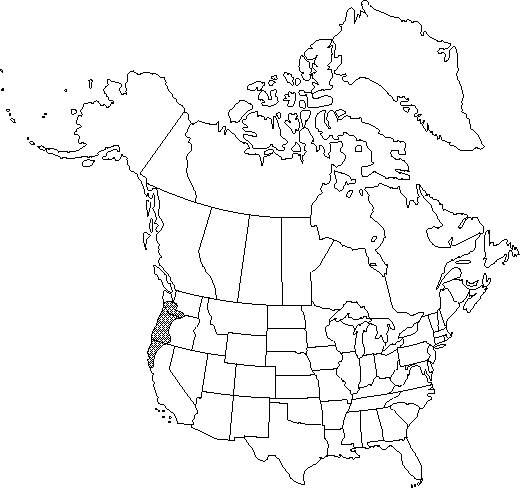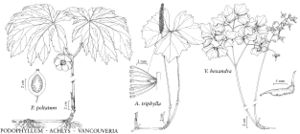Vancouveria hexandra
Ann. Sci. Nat., Bot., sér. 2, 2: 351. 1833.
Leaves falling when fruits maturing, 2-3-ternately compound, 8-30 cm; petiole 3-25 cm, pilose at base. Leaflet blades narrowly to broadly ovate to rhomboid or rounded-pentagonal, often 3-lobed, base cordate, margins entire to slightly sinuate and not conspicuously thickened, apex rounded to notched; surfaces abaxially sparsely hairy, adaxially glabrous. Inflorescences: peduncle 2-3 dm; pedicel 1-3 cm, glands absent. Flowers 5-30; bracteoles 6-9, white, yellowish when dried, dotted with glandular trichomes; sepals 6, white, 5-12 mm; petals 6, white, yellowish when dried, 4-6 mm, margins entire, petal apex strongly reflexed, with nectar-bearing pocket, nectaries golden; filaments stipitate-glandular. Follicles greenish to light-brown, 10-15 mm including beak, beak 2-3 mm, stipitate-glandular. Seeds 1-6, black, lunate to reniform, 3 mm. 2n = 12.
Phenology: Flowering and fruiting spring–summer (May–Jul).
Habitat: Redwood and Douglas-fir forests, deep shade
Elevation: 100-1700 m
Distribution

Calif., Oreg., Wash.
Discussion
Selected References
None.
Lower Taxa
"dm" is not declared as a valid unit of measurement for this property.
